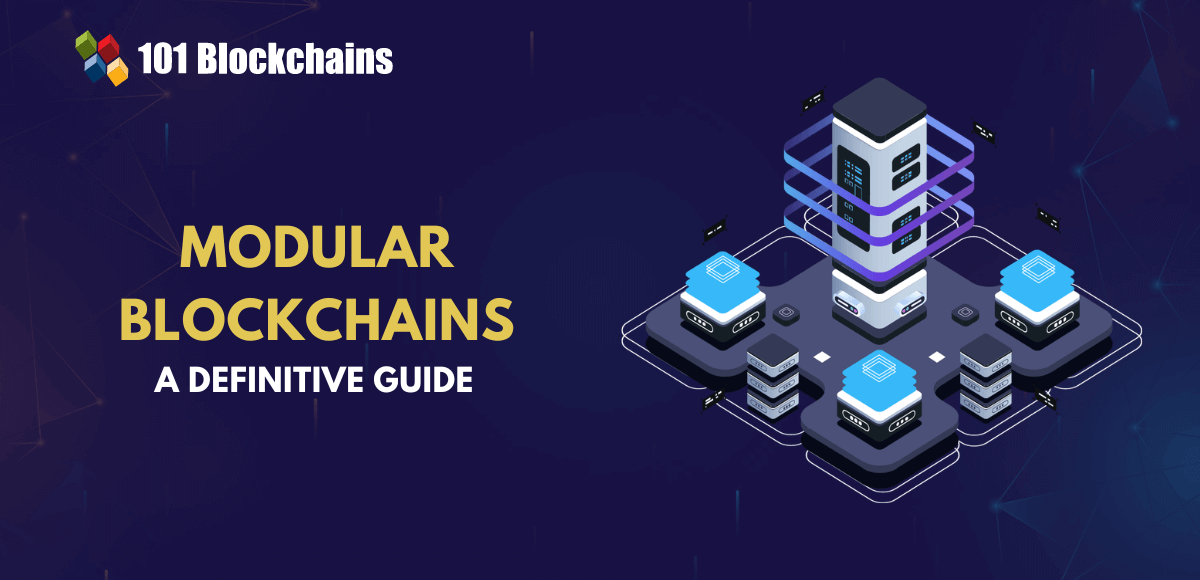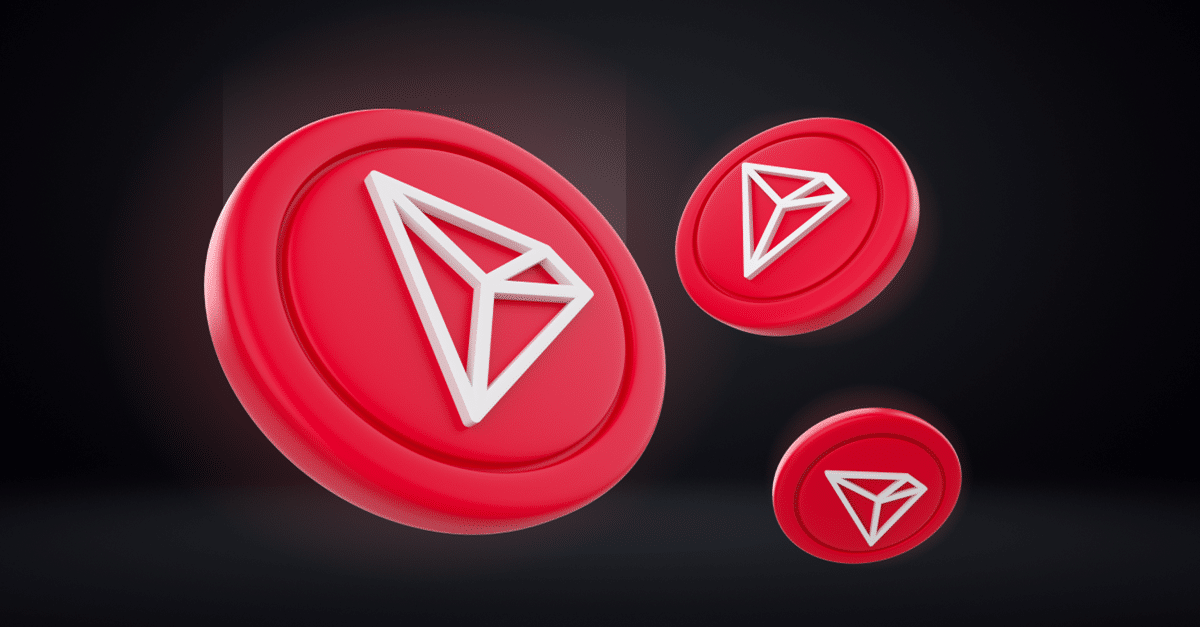Introducing modular blockchain

The advancement of blockchain technology has led to the emergence of efficient and specialized architectures that are superior to traditional designs. Traditional monolithic blockchains have had issues with flexibility and scalability. Using this modular blockchain guide, you can learn how modular blockchains can solve the problems associated with monolithic blockchains. Modular blockchains have a different design philosophy that allows the core functions of the blockchain to be divided into several modules.
Separation of modules helps each module to be developed, maintained, and upgraded independently, thus improving adaptability and efficiency. Modular blockchains offer a more scalable and flexible alternative to traditional blockchain architectures. Instead of putting all responsibilities on a single chain, modular blockchains work by splitting up core tasks and focusing on one task while delegating other tasks to other chains. In this modular blockchain guide, we will learn how modular blockchains work and what benefits they offer.
Build your identity as a certified blockchain professional with a blockchain certification from 101 Blockchains, which provides enhanced career prospects.
Understanding the reasons for the shift to modular blockchain
Blockchain technology has created a wave of excitement in the modern technology sector in the past few years. It is reasonable to believe that the new approach to storing and exchanging information with the advantages of decentralization and cryptographic security will be irreplaceable. Why do we need a modular blockchain structure when we can find many advantages with monolithic blockchains? The transition to a modular structure represents an important milestone in the evolution of blockchain technology.
Monolithic blockchain architecture involves creating an immutable ledger that prioritizes security and data integrity above all else. While monolithic design ensures better security and trust, it has certain limitations. The limitations of monolithic blockchain architecture pose challenges to the adoption of blockchain technology in various fields such as supply chain management, finance, and healthcare. The following factors related to monolithic blockchain can help you understand why the shift to modular architecture is essential:
Lack of flexibility
The most obvious drawback of monolithic blockchains is their lack of flexibility. We need to find an answer to the question, “Which blockchain is modular?” This is because monolithic blockchains have problems introducing new changes and upgrades. All components of a monolithic blockchain are tightly integrated with each other, so introducing even small changes requires extensive testing and consensus. Therefore, monolithic architecture creates a huge trap for adaptation and innovation in the blockchain environment.
Concerns about efficiency
Monolithic blockchains can have advantages in terms of security and trust. At the same time, it is important to note that monolithic blockchains require significant amounts of computing power and energy. Maintaining a monolithic blockchain network can be a huge cost-intensive task, making it less sustainable in the long run.
The challenge of scalability
Scalability is a critical requirement for the growth of blockchain networks. Monolithic blockchain architectures cannot meet the growing demands of the network due to increasing transaction volumes. Every node in a monolithic architecture must process and verify each transaction, which leads to network congestion. As the number of users on a blockchain network increases, fees are likely to increase and transaction speeds are likely to slow down.
Enroll in our Blockchain Scalability and Interoperability Mastery course today to learn the skills you need to develop faster, more scalable, more robust, and more interoperable dApps.
Unraveling the Definition of Modular Blockchain
An overview of the challenges associated with monolithic blockchain architectures demonstrates the urgency of introducing alternatives. Modular blockchains help address the notable issues that come with monolithic architectures. Modular blockchains can be defined as a new approach to blockchain architectures where different components are available at different layers.
The architecture of a modular blockchain project primarily involves multiple layers dedicated to consensus, execution, and data availability. A modular approach provides a better foundation for improving efficiency and scalability, with each module managing specific functions independently.
Separating the components of a modular blockchain architecture can help achieve greater flexibility and throughput than a single blockchain.
The main purpose of introducing modular blockchain is to focus on providing a more scalable, efficient, secure, and affordable system. The long-term goal of modular blockchain is to attract more users and developers to blockchain, thereby expanding the scope of innovation.

Discover the uniqueness of modular blockchain architecture
The uniqueness of modular blockchains makes us curious about their architecture. As the name suggests, modular blockchains operate not as a single blockchain but as multiple modules. Modules in modular blockchain architecture address specific elements of blockchain operations, ensuring efficient distribution of labor. In this modular blockchain guide, we will look at the important layers or modules of the architecture and understand how they work.
The consensus layer is a prominent addition in modular blockchain cases, as consensus is essential for reaching a consensus on the blockchain state. It is responsible for ensuring that all network participants agree on transactions and the order in which they are added to the blockchain. Modular architecture separates the consensus layer, allowing for a variety of consensus mechanisms to be used, tailored to specific requirements.
-
Data Availability Layer
The data availability layer is responsible for storing and maintaining data related to the blockchain. It helps ensure immediate availability of data related to smart contracts and transactions to all network participants. Separating the data availability layer provides greater flexibility for optimizing data storage and retrieval. The data availability layer plays a critical role in improving the integrity of the blockchain network without increasing costs or slowing down speed.
The execution layer acts as the destination where actual transaction processing takes place. Only in this layer can we find transaction processing and smart contract execution. Through the execution layer module, the blockchain can manage large volumes of transactions and more complex operations without increasing the network burden. This can contribute to the efficiency and processing speed of the blockchain network.
Another important layer of the modular blockchain architecture is the settlement layer. The settlement layer is responsible for verifying the finality of transactions and resolving disputes. All of these layers in the modular blockchain guide operate independently, increasing flexibility and improving the scope of specialization. The modular blockchain architecture supports the optimization of each layer for specific functions, creating a more scalable and faster blockchain.
Start learning blockchain today with the world’s first blockchain technology path with high-quality resources tailored to industry experts!
Identifying Real-World Best Practices for Modular Blockchain
Modular blockchains offer new opportunities for users and developers, offering the potential to change the face of the blockchain ecosystem. There are many real-world examples of modular blockchains that have changed the traditional perspective on blockchain technology. One of the most important examples of popular modular blockchains is Celestia, a modular data availability network. It offers an innovative approach to designing blockchain infrastructure with the mission of making blockchain technology more user-friendly and accessible.
Another real-world example of modular blockchain is Syscoin, which is leading the revolution in blockchain innovation. Syscoin offers a unique layer 1 solution that focuses primarily on regulatory compliance. Syscoin has introduced the possibility of a native regulatory compliance token, which would allow regulatory compliance to be integrated into the consensus layer of the blockchain. The groundbreaking technology used by Syscoin is focused on revolutionizing blockchain processing capacity and utilizing parallel processing techniques.
Learn more about the benefits of modular blockchain
A discussion on the question, “Which blockchain is modular?” would be incomplete without the benefits of modular blockchains. It is important to understand the benefits of modular blockchains and why it is important to introduce them into the blockchain environment today. The biggest advantage of modular blockchains is that they ensure improved scalability due to the division of work. Modular blockchain designs provide a system that is more scalable, adaptable, and customizable than monolithic architectures. At the same time, modular blockchains do not compromise on decentralization or security.
The next important advantage of modular blockchains is that they are available at a lower cost. This allows for faster development and launch of new blockchains and web3 solutions. Modular blockchains provide developers with the flexibility to independently evaluate and test blockchain components, which significantly improves security.
The most obvious advantage that can be explored with modular blockchains is the opportunity to access new avenues for innovation. The flexibility of modular blockchain architecture allows developers to experiment with a variety of ideas and create innovative solutions with maximum customization.
Start learning blockchain today with the world’s first blockchain career path with high-quality resources tailored to industry experts!
Should we be concerned about the limitations of modular blockchains?
Yes, modular blockchain architectures are likely to encounter certain limitations. Being aware of these limitations can help you get the most out of your modular blockchain project based on your needs. First of all, it is important to note that having custom modules for developers will make the overall system more complex. The network functions of modular blockchains are not exposed to as extensive testing as monolithic architectures.
Final Thoughts
Modular Blockchain Guide shows that it can solve many of the problems associated with monolithic blockchain architecture. Modular Blockchain can create an easier path for blockchain solutions to be introduced in various fields. The most important highlight of modular Blockchain is that it separates different core functions into separate modules that operate independently. Find out more insights about modular Blockchain and its real-world applications right now.

*Disclaimer: This article should not be taken as investment advice and is not intended to provide investment advice. The claims made in this article do not constitute investment advice and should not be taken as such. 101 Blockchains is not responsible for any losses suffered by anyone relying on this article. Do your own research!



